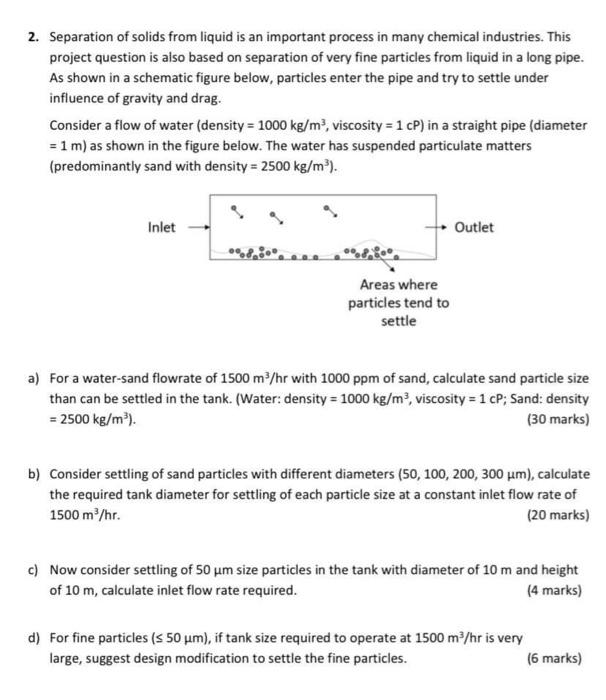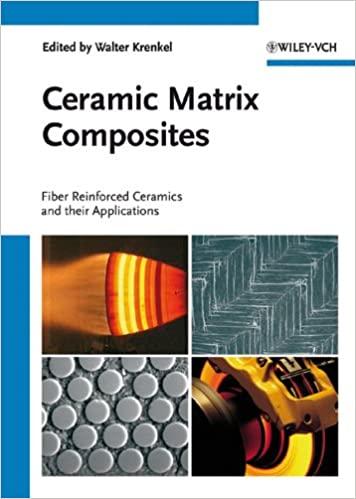Question
2. Separation of solids from liquid is an important process in many chemical industries. This project question is also based on separation of very fine
2. Separation of solids from liquid is an important process in many chemical industries. This project question is also based on separation of very fine particles from liquid in a long pipe. As shown in a schematic figure below, particles enter the pipe and try to settle under influence of gravity and drag.
Consider a flow of water (density = 1000 kg/m3 , viscosity = 1 cP) in a straight pipe (diameter = 1 m) as shown in the figure below.
The water has suspended particulate matters (predominantly sand with density = 2500 kg/m3 ).
a) For a water-sand flowrate of 1500 m3 /hr with 1000 ppm of sand, calculate sand particle size than can be settled in the tank. (Water: density = 1000 kg/m3 , viscosity = 1 cP; Sand: density = 2500 kg/m3 ).
b) Consider settling of sand particles with different diameters (50, 100, 200, 300 m), calculate the required tank diameter for settling of each particle size at a constant inlet flow rate of 1500 m3 /hr.
c) Now consider settling of 50 m size particles in the tank with diameter of 10 m and height of 10 m, calculate inlet flow rate required.
d) For fine particles ( 50 m), if tank size required to operate at 1500 m3 /hr is very large, suggest design modification to settle the fine particles.

Step by Step Solution
There are 3 Steps involved in it
Step: 1

Get Instant Access to Expert-Tailored Solutions
See step-by-step solutions with expert insights and AI powered tools for academic success
Step: 2

Step: 3

Ace Your Homework with AI
Get the answers you need in no time with our AI-driven, step-by-step assistance
Get Started


